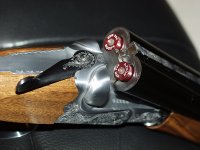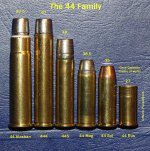Greenjoytj
Member
Is it more important to seat bullets to the load recipes cartridge overall length (COL), or to get the bullet inserted to be close to the forward edge of the cannelure?
I'm new to reloading so looking in my Lee #2 manual it says to have the case mouth near the forward edge of the cannelure for crimping. To get to the recipe COL I have to seat the bullet further out with the case mouth closer to the rear edge of the cannelure. I suspect seating the bullet to the recipe's COL is more important in order to keep pressure inline with the manuals published test pressure.
I am loading for the first handgun I've ever owned, it a new S&W 686 "Competitor" model 357 Magnum 6" barrel 6 shot cyl.
I'm new to reloading so looking in my Lee #2 manual it says to have the case mouth near the forward edge of the cannelure for crimping. To get to the recipe COL I have to seat the bullet further out with the case mouth closer to the rear edge of the cannelure. I suspect seating the bullet to the recipe's COL is more important in order to keep pressure inline with the manuals published test pressure.
I am loading for the first handgun I've ever owned, it a new S&W 686 "Competitor" model 357 Magnum 6" barrel 6 shot cyl.


